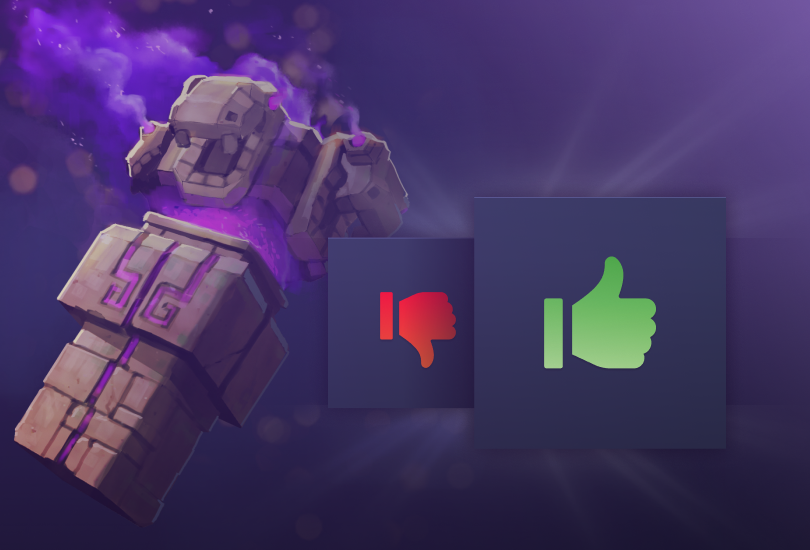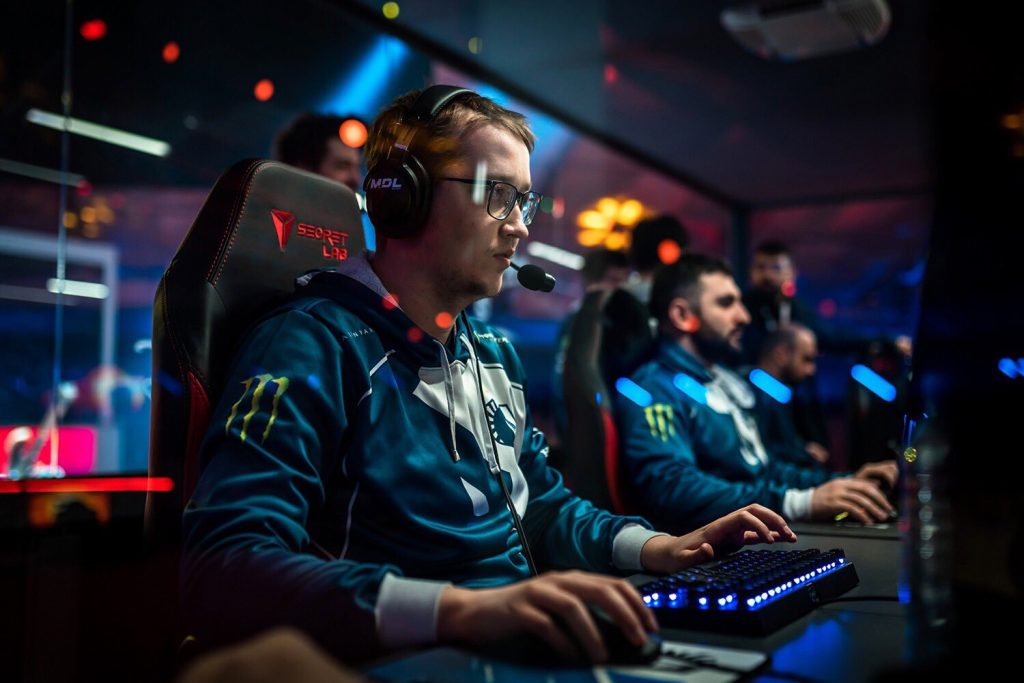Elon Musk's Dota 2 esports bot has been defeated

In an extremely cheesy set-up more like something out of Disney than WWE, Danil “Dendi” Ishutin, a professional gamer since before DotA evolved into Dota 2, arrived onto a massive LED-lit stage. His cartoonish robe concealed his head and face as the camera preceded him through the halls of Seattle’s Key Arena.
When the tall figure revealed his identity, the crowd erupted—Ishutin is nothing less than a legend to these thousands of fans. His legacy as a not only a well-respected and talented gamer, but also an amicable, genuine personality was likely responsible for many of these fans’ presence today, as Dota 2 is not a game you tread lightly into.
While Ishutin wasn’t competing himself in the main portion of the event, he was clearly getting set up to battle, and every battle needs an opponent. But quickly, Ishutin became a trivial fact as they unveiled his opponent: a bot.
Players like Dendi learned, trained and experimented on bots provided by Valve, Dota 2’s developers, though they were good at the fundamentals and very little else. In this case, a research company had trained one instance of artificial intelligence on thousands of hours of a specific game style: one-versus-one down the middle of the map, only with the character Shadow Fiend, with restrictions on items.
To make a long story short, Ishutin found himself not only defeated, but frustrated. He took on the first two out of three matches and lost to the bot, eliciting sympathy from the crowd around him. Still, he intently listened as the company responsible explained some of the workings of the bot and company—which offered prizes to the first 50 players who could beat it at a nearby sort-of-offsite venue.
“Last-hitting of creeps is good, dying is bad, getting damaged is bad”
The bot was crafted by OpenAI, an artificial intelligence development non-profit with investors including Elon Musk, which promises a future of “safe” AI. This program had been trained on thousands of hours of games of that specific format. As one of the representatives said on-stage—and then again told —the learning process is sloppy, but certainly there.
“It takes I’d say a year to just learn the basics, understanding what all the heroes and spells do,” he said. It would take too much time and effort to code in all of the items, strategies, macro- and micro-knowledge and the state of play and such.
Instead, they let the bot play itself thousands of times and iron out the kinks.
“The only influence that we have on it is we say last-hitting of creeps is good, dying is bad, getting damaged is bad,” he explains. “What happens is that it will walk randomly, trying out lots of things. We can run the games usually much faster than real time, and we can run many copies of them in parallel.
“Each of the changes of the agent makes it slightly more efficient, slightly better. After about two weeks, they reach the level of professional gamers and then they become much better than any human players.”
In other words, the bot played against itself until it understood what worked and what didn’t.
But then, naturally, that means that this “smart bot” essentially only exposed itself to a limited scope of strategies and situations. For instance, as even the OpenAI rep notes, a bot can’t “tilt.” A bot that never pulls a creep wave won’t know what that means, and a bot may not explicitly know the consequences of uphill miss chance.
That’s to say, with any software, this iteration of this Shadow Fiend bot had exploits—and OpenAI was interested in seeing who could find them, or even beat the bot in a fair manner. Hence the aforementioned offer.
And it absolutely happened; at least 50 players were able to take down the bot.
It went quietly for the most part, as it seems OpenAI reps weren’t actually present when it happened. So the first major recording of it happening was… apparently myself, the author.
All 50 Shadow Fiend Arcanas for beating the OpenAI bot got scooped up by the end of the night.
— Victoria Rose
Naturally, it elicited a lot of questions about how I knew what was going on. I do wish others more notable than me could have seen it, though, as I feel like it was a feat in the ingenuity of humanity.
How did anyone at all manage this?
During The International, as the story goes, the bot overcame Ishutin in a show match, causing the esports legend to feel uneasy on the big stage. At the end of the segment, OpenAI offered a challenge: the first 50 players to beat the OpenAI bot would receive an expensive in-game item. So, of course, fans flocked to figure it out, dropping hours into collectively finding work-arounds.
Late that same Friday night, around midnight, I rolled into the event’s LAN center with a few acquaintances, including an ex-professional who had played in past TI events. A section of the hundred or so computers had been roped off, and groups of fans, wired with either the sponsoring energy drink or just pure hype, were excitedly huddled around a few players slaving away at the PCs.
When we asked what the section was for, it turned out to be the OpenAI section. And at one point during this conversation, we heard a call:
“Seventeen Shadow Fiend Arcanas left!”
Seventeen. Quick math should inform you that the actual number of wins, then, was 33. Just that evening, 33 players had taken on the bot victoriously. I hadn’t seen Elon Musk’s infamous tweet yet (and I didn’t until I tweeted the above), but I’m sure if I had before this, I would have been furiously bragging on their behalves on my phone.
To be frank, we weren’t thinking about it trying it. The ex-pro I was with had told me his friend, a panelist at that event, tried it, and it was supposedly just frustrating. Still, curiosity got the better of us, and we started asking around—how did anyone at all manage this when pros and panelists were warning us for our sanity?
It didn’t take much effort to find other fans willing to spill the beans; after all, humans as an esports unit will not be humiliated by measly bots, especially after many of us grinded hundreds of hours to achieve otherwise.
At that moment, as one eager fan explained, Team Human had figured out several winning tactics:
Be really, really good.
Rumors had it that a few 8k MMR players (that’s well over a 99.99% percentile) had rolled in and taken the bot, head-on, in a proper show. We didn’t get to witness it—though one player a row over came extremely close.
What I suspect is that it’s a combination of, one, the bot having no idea what tower damage and bonuses are; and, two, miss chance (the percentage of an attack missing when throwing the attack up a hill) taking an appearance at a good moment. In other words, while the bot knows that being in a certain region of high ground is good, it doesn’t know why it’s good.
Cheese with items.
The OpenAI bot is trained with thousands of one-versus-one mid Shadow Fiend battles versus itself, which means that it’s been exposed to pretty standard winning compositions. Again though, with a lack of actual understanding of the game, it mimics without rationale. If you were to build against a right-click hero, for instance, you’d want more early-game armor.
And, again, the bot lacks the implications of essentially anything else you buy. So players would find unusual item combinations to optimize damage output, and with little understanding of how to react build-wise and mechanically, the bot wouldn’t be able to survive the newfound power.
Infinite creep pulling.
Here, we discuss the easiest strategy that isn’t all that easy: the infinite creep pull. Basically, this means abusing one of the game’s inherent features, the creep wave that marches down every 30 seconds to assist you in battle. How it works:
It involves some intense item-buying and tanking, but it’s pretty much doable at any skill level with enough ingenuity. Basically, again, the bot lacks understanding of the game, and unless you come close to the bot in a certain specific way, it won’t come after you—even if you’re barely surviving the creep chase.
This is the one most fans opted for, as it didn’t involve the levels of game knowledge and skill that actually fairly taking on the bot required. I heard from another fan present that pro and panelist Per Anders Olsson “Pajkatt” Lille also took on the bot using one of the other two strategies, though I’m not sure if he cheesed items or not.
The creep pull strategy was what my friends and I opted to try. We sat down and went for it. I mean, why not? The attempts were free. Quickly, though, I found myself frustrated and gave in after only two matches, though I was honestly more interested in how others were doing. I walked around to check out players that came millimeters away from defeating the bot in more fair ways.
As each of us slowly gave in—trying not to die to a giant wave of mini-monsters is a difficult feat—we watched as my ex-pro friend came closer to taking down the enemy tower as he kept looping with the wave of “stupider” creep bots…
“And that’s all the Shadow Fiend Arcanas!” When I looked up, I saw at least two or three irritated faces lit up by the greens and reds of Dota 2’s map.
Fifty players had come in and defeated the OpenAI bot—and at least several more were drawing virtual blood that very moment.
In the weeks after, pros were allowed to “borrow” the bot in order to practice with it. Some pros have chosen to play with it, often for stream purposes, and it’s made plenty of laughs. However, it’s still gotten outplayed by the likes of and (at least ).
Basically, the bot’s weakness to mistakes is as human as we are: while it’s not learning, it’s prone to blind mistakes. It seems to lack much of the reasoning that’s required to understand the game fully, causing quite a few exploitable holes.
Does that mean this bot is actually human as us? Or is this a hole in the system, like we’d expect from any other software? We won’t get into that debate here and now (unless you guys really want to), but I’m not any less excited for what groups like OpenAI can bring to the table.
The takeaway for now is, us humans still have a while before we have much to worry about.








Comments
There are no comments yet